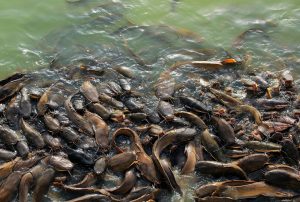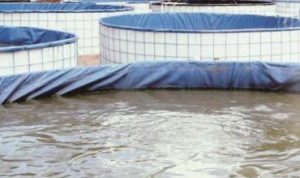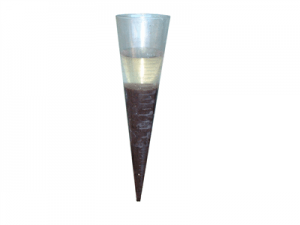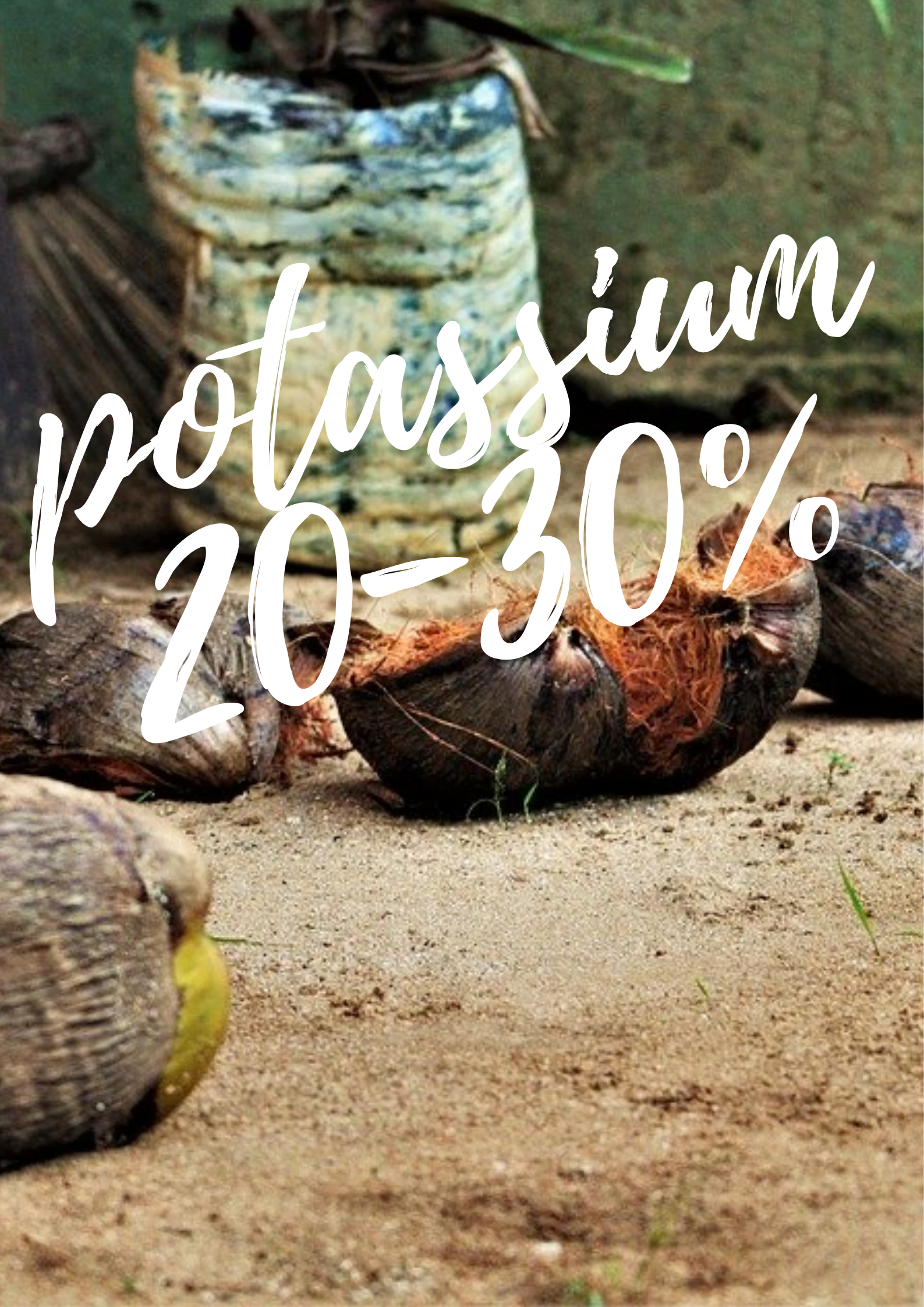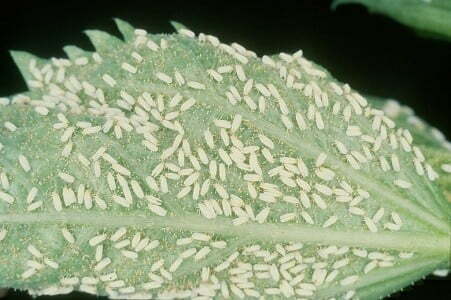Biofloc catfish is gaining popularity and is widely tried because of its bombastic delivery.
Some say the yield can be 10 times, 5 times, the profit will be doubled and so on. Do you believe it all? Hmm, wait a minute … I guess you should read this first.
This biofloc catfish was introduced, especially in Indonesia, in 2014. Then the trend exploded in 2015. After that, it receded and stagnated.
This is because many business actors have suffered losses (went bankrupt).
Then the biofloc technology developed again, because many scientific studies had been carried out. It is still ongoing and research is still being done.
However, many people have started to doubt this biofloc.
Even though we are in a state of urgency, we must be able to think logically and clearly. Do not rush into making decisions that are transactional (out of money). Especially when you’re confused, dizzy and almost frustrated.
Because when the mind has calmed down, usually regret will arise. Furthermore, like it or not, we have to continue because we are already tucked in.
So, the decisions taken are carried out in half. Or halfway, go back to the old fish farming model.
Biofloc does provide additional efficiency in catfish. This technology has been successfully used in shrimp farming abroad.
Even then, it was carried out by disciplined technical steps and massive aeration.
Aeration is very important in supporting the creation of biofloc biota in ponds. And we just aerate it with an aquarium aerator.
The essence of biofloc is actually not so that it is high stocking density or as additional feed for catfish.
However, biofloc is actually more about removing toxic waste in ponds. In this case the waste is nitrogen and its compound form that comes from catfish feces.
Or, nitrogen in its poisonous form, namely ammonia (NH3 and NH4 +), is converted into non-toxic compounds and used by microorganisms to become flocks.
Thus, the catfish’s living environment becomes healthier and has the opportunity for a higher stocking capacity. However, the biofloc formed must still be controlled.
Biofloc control needs to be done. Because with the addition of a carbon source, in this case molasses, will make more floc.
If there are too many of them, they will consume more oxygen. So, instead competing with the catfish itself.
For that, let’s take a deeper look at how this biofloc catfish should be done.
How efficient is the application of this biofloc technology in increasing the productivity of catfish farming.
What is biofloc technology?
Biofloc technology is a technique in fish (catfish) cultivation to improve the quality of pond water or cultivated water.
This biofloc technique uses the help of microorganisms such as heterotrophic bacteria and phytoplankton. Many microorganisms play a role, there are bacteria, fungi, yeast, protozoa, phytoplankton.
This biofloc will be optimal if there is an appropriate ratio between the elements Carbon (C) and Nitrogen (N).
These microorganisms will utilize organic nitrogen from food scraps and fish waste. Meanwhile, carbon sources need to be added.
The carbon source that can be used in catfish is molasses.
Molasses is included in simple sugars. So that it is more quickly used by bacteria.
Thus, the bacteria planned for the biofloc will grow faster than phytoplankton and other harmful bacteria.
These bacteria together will form floc or clots. Dark brown in color.
When viewed under a microscope, the floc is active (the bacteria are alive). If it’s dead, then it’s just plain mud.
Why does it have to be biofloc?
Catfish that are in the pond will produce feces every day. These feces will accumulate and make water conditions worse.
The bigger the fish, the more and faster the feces will be. Automatically, the pool water conditions will get worse, faster.
Naturally, microorganisms such as phytoplankton will appear that can take advantage of these fish feces. They will break down their organic N content.
But is phytoplankton enough? Not, with the large and fast amount of feces.
Need the help of other bacteria so that fish waste can be decomposed and does not interfere with fish life.
Nitrobacter and Nitrosomonas bacteria can be used to overcome this problem.
These bacteria will break down ammonia (NH3) and ionized ammonia NH4 + into nitrite. And by Nitrobacter, nitrite will be converted into nitrate (NO3).
The end product of Nitrobacter is nitrate. Nitrates cannot be eaten by fish. In large quantities will make the water salinity high.
But nitrates can be used by plants. Nitrogen in the form of nitrate is better for plants than nitrogen in the form of ammonium.
This means the addition of Nitrosomonas and Nitrobacter bacteria is very suitable when combined with aquaponics.
Biofloc bacteria are different from Nitrosomonas and Nitrobacter. The bacteria used in the biofloc are heterotrophic. The type of bacteria is bacillus bacteria.
The bacillus bacteria will use ammonia and use it to grow to form flocks. The longer the floc size will get bigger and settle at the bottom of the pool.
Hence, aeration which functions as an oxygen agitator is also useful for stirring this flock.
Together with other microorganisms, bacteria will gather and form floc. This flock can be eaten by fish.
However, there is no guarantee that catfish will always eat flocks. Catfish do eat flock but in small amounts.
Because the purpose of biofloc catfish is to create a comfortable environment for catfish, so don’t expect much that catfish will eat flock. The feed is based not on the flock, but the main feed, for example, pellets.
The purpose of biofloc catfish
Maintaining catfish in biofloc does not mean everything will be easier and simpler.
For more results, it must require more effort than usual. It is a law of nature.
If it turns out that after using the biofloc system, catfish farming activities do not provide more benefits, it’s better to just return to the old pattern. Or add knowledge about the correct biofloc.
Therefore, when working on biofloc, we must concentrate on the following points.
- There must be a level of savings that is quite significant (efficient). Especially in water and feed.
Because there is a contribution of microorganisms in the biofloc, how to quantify the contribution of the biofloc to growth. - How is the welfare of fish in the biofloc system, is it stressful, is it normal, how is it, etc.
is there an effect of feed protein level on fish growth and growth? Is it true that biofloc can reduce the growing dose of feed - How is the composition of the floc particles in the biofloc? Proximate analysis was performed.
- What sources of c can be used? Molasses, sugar, flour
is there any relationship with the productivity of the biofloc itself per unit volume. - What is the optimal volume of floc?
- How are the dynamics of nitrogen in the biofloc system?
- What is the optimal stocking density, 400 individuals, 600, 1000 / cubic meter?
The intro to the biofloc is enough.
Now we go to the biofloc catfish technique. Later it will be accompanied by the main explanations.
1. Preparing biofloc catfish ponds
Many catfish ponds are now round in shape. This does not mean that biofloc catfish must have a round shape.
But the round catfish pond design has many benefits:
- The shape is better. With tarpaulin and wire mesh materials it can make the pool look neater.
- Cheaper costs. Rectangular tarpaulin pools with bamboo supports and gaps are cheaper. But in terms of beauty, it’s lacking. If the material is likened to a round pool, I think the cost is almost equal, it could even be more expensive.
- Pond irrigation systems can be made easier. By making the bottom of the pond concave in the center and a drain placed there, sewage will collect in the middle. Boom, once open, most of the pool debris can be removed.
To remember, the shape of the pond does not affect the growth of catfish. There is no scientific report yet if the catfish round pool can be better.
The level of urgency is the same. It’s just a matter of preference. Biofloc can still be grown in square ponds.
In biofloc, the installation of ponds must be considered.
The outlet channel must be in the middle of the pool with the center of the pool deeper than the edge of the pool.
Every one-meter distance from the middle of the pond must be 15 cm higher.
This will be useful when you want to remove the pool bottom water. Because there are certain times when this bottom water needs to be dumped.
2 . Biofloc Preparation Formula
The materials needed or the biofloc formula to grow biofloc in pond water are as follows:
1 kg of crude salt per m3.
Dolomite 50 grams per m3. [Adinserter block = “3”]
Molasses 100 ml per m3 or 75 grams of sugar per m3
Probiotics 10 grams per m3.
The total biofloc formula above is per cubic meter of pond water. We have to recalculate if the pool size is larger than 1 m3.
For example, a round pool with a diameter of 2 meters and water filled with a depth of 80 cm. The pool water volume is as much
3.14 x 1 meter x 1 meter x 0.8 meter = 2.5 cubic meter.
1 meter in the calculation above is the radius of the pool. That is by dividing the diameter of the pool by 2. Then the depth of the pool is 80 cm = 0.8 meters.
Because the volume of the pool is 2.5 cubic meters, the number of materials above will be.
2.5 kg of crude salt per pond.
Dolomite 125 grams per pool.
Molasses 250 ml per pool.
Probiotics 25 grams per pool.
Next, we add the ingredients one by one.
First, add coarse salt. Put salt in the nets for fish. Then, put the net into the pool and take it around the pool until the water runs out.
Second, add dolomite lime. First mix dolomite with water in a bucket. Then spread evenly into the pool.
Third, add molasses. Dilute with water then spread evenly throughout the pool.
Lastly is probiotics. First, dissolve with water and then put it in the pool.
The pool needs to be aerated continuously with 4 points of aeration. Each point is 40 liters/minute.
The preparation of this biofloc water medium needs to be formed first. At least a week before the seeds can be spread into the pond.
Probiotics must consist of heterotrophic bacteria. The most widely used in biofloc is the type of bacteria Bacillus sp.
Bacilluss subtilis, bacilluss meganterium, bacilluss licheniformis.
EM4 cannot be used in biofloc. The living environment of EM4 bacteria is not following the needs of catfish. Contradictory.
The reason is:
EM4 requires a low pH and the ideal pool water pH is around 8.
EM4 requires anaerobic conditions, while catfish ponds require a high oxygen content.
3. Controls biofloc development
In the early stages, control of the formation of biofloc media. In common and visible, it can be observed from the color of the water.
The color of the water is also influenced by the presence or absence of shade above the pond. Or the intensity of the sun received by catfish pond water.
If the pool is exposed to high enough sunlight, phytoplankton will certainly grow a lot. And the phytoplankton is green.
The color of the biofloc is dark brown. So there is a possibility that the color is mixed between dark greenish-brown.
The exact measurement is with a microscope. So it looks like the flock is active or not.
The bacteria in the biofloc need oxygen to survive. The minimum requirement is 2 mg / L of pool water.
This is not the oxygen requirement for the fish.
Ideally, the aeration point is 10 liters/minute. That is a large volume of aeration.
No aquarium aerator is that big.
Biofloc volume
Biofloc catfish is like keeping two animals in one pond. One is catfish and the other is biofloc.
Because the main thing is the fish, the amount of biofloc in the pond should not be excessive.
The volume of the biofloc should be measured weekly.
You do this by using the Imhoff cone.
Take 1 liter of pool water in the middle of the pool. Then let it steep for 30 minutes. Later the flock will settle to the bottom of the Imhoff cone.
The optimal volume of biofloc in catfish is a maximum of 100 ml/liter of water.
An excessive amount of biofloc will create a seizure of oxygen between catfish and biofloc. Since the main objective is catfish, the biofloc must be reduced.
You do this by throwing the bottom water into the pool. The reduction of basic water can be done as much as 10% of pool water. With a note that the water does not smell bad and disposal is only intended to reduce the volume of the flock.
4 Seeding
Technically, put in seeds of biofloc catfish is no different from other maintenance models.
Namely, catfish seeds and their containers are put together with the container into the pond. So that the temperature of the seed container and pond water is the same.
This is so that the seeds adapt first.
Then slowly let the catfish release itself into the ponds.
But the most important thing in terms of entering seeds is that catfish must be in good health and not attacked by any bacteria.
The explanation is like this.
The newly formed biofloc medium is rich in sugar. The origin of this sugar is from molasses or sugar.
The development of biofloc in this early week is not much.
If the catfish seeds have bacteria in their bodies, then there is a possibility that the pathogenic bacteria are more developed than the biofloc.
Then what happened, surely we can already find out.
The stocking density of biofloc catfish
What is the optimal stocking density?
This research is still ongoing.
Some give 1000 per m3 to 2000 heads / m3.
Ideally, the stocking density is 400 heads / m3.
But believe me, the higher the density, the more problems that must be faced.
One of them is that the denser it is, the lower the growth rate will be. With a moderate stocking density, the consumption weight can be achieved more quickly.
5. Feeding
In biofloc catfish, the feeding should not be excessive. All catfish farming systems are the same.
Feeding is given as much as 3% of the catfish biomass.
However, when catfish no longer showed an active response to the thrown feed, the administration was stopped.
The food that the fish cannot eat will damage the water quality.
The fish feed contains very high protein. Protein is a great source of organic N.
This organic N will be converted by bacteria in the pond into ammonia. If the amount exceeds the working capacity of the biofloc.
If you use biofloc, it will still make the workload of the biofloc bacteria heavier.
This means that the uneaten feed contributes to a very high decrease in water quality.
It is unfortunate.
6. Biofloc catfish water replacement
Catfish using biofloc does not mean that there is no need to change pond water. It can be done without changing water, as long as:
The water doesn’t smell bad
The volume of biofloc is not excessive
Pool water does not decrease due to evaporation.
In conventional catfish cultivation, a water change is recommended as much as 30% each week.
Or in a month add water as much as 120%. It’s like a new water change.
This is done so that the catfish can grow normally.
Lha, if water changes like this are also carried out in biofloc catfish, that means there is no difference, right?
Better to just use conventional ones. There’s no need for anything added – add salt, molasses, dolomite, and probiotics. In fact, we can be more efficient.
Hence, in biofloc system catfish, a water change is carried out or added if you experience the three things above.
Smelly pond water indicates very little dissolved oxygen in the pool water. And the ammonia is high too.
It could be due to lack of aeration, uneaten feed, or dead biofloc.
If the aerator is dead for more than 5 hours, then the pool water needs to be removed by 30% or one third. [Adinserter block = “3”]
Then make a new biofloc application at the beginning of media preparation.
If the lights go out for only 1 hour, just throw away the basic water. About 10% of the pool water.
Then add more water as before.
7. Harvesting
Harvest, just harvest. If the size is accepted by the market, catfish can be harvested.
Prices adjust to local prices.
Simple. That is all.
Should the water be removed?
If the water is still good, it can be moved to another pond. So later, there is no need for a new biofloc application again.
More efficient.
8. Catfish disease
Catfish mustache broken or curly
The mustache broken on catfish is caused by the flexibacter bacteria. Treatment with Japanese papaya leaves.
Take some Japanese papaya leaves, then knead them into a very small size. Spread in the pool.
You can also crush the leaves – squeeze and give them together with the feeding. The catfish will eat the leaves.
Giving is done once a day. 3 – 4 days, God willing, the mustache can grow back.
That is, the catfish is getting better.
Reference
Adi Sucipto. https://www.youtube.com/watch?v=ZSy7826H1sw
 JOYNIM FARM Goat Farming, Cattle Farm, Laying Hens, Quail Farm, Gardening
JOYNIM FARM Goat Farming, Cattle Farm, Laying Hens, Quail Farm, Gardening

